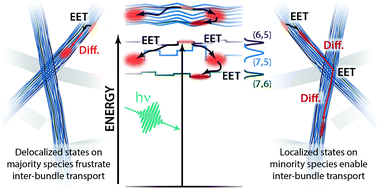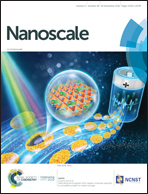Effect of nanotube coupling on exciton transport in polymer-free monochiral semiconducting carbon nanotube networks†
Abstract
Semiconducting single-walled carbon nanotubes (s-SWCNTs) are attractive light-harvesting components for solar photoconversion schemes and architectures, and selective polymer extraction has emerged as a powerful route to obtain highly pure s-SWCNT samples for electronic applications. Here we demonstrate a novel method for producing electronically coupled thin films of near-monochiral s-SWCNTs without wrapping polymer. Detailed steady-state and transient optical studies on such samples provide new insights into the role of the wrapping polymer on controlling intra-bundle nanotube–nanotube interactions and exciton energy transfer within and between bundles. Complete removal of polymer from the networks results in rapid exciton trapping within nanotube bundles, limiting long-range exciton transport. The results suggest that intertube electronic coupling and associated exciton delocalization across multiple tubes can limit diffusive exciton transport. The complex relationship observed here between exciton delocalization, trapping, and long-range transport, helps to inform the design, preparation, and implementation of carbon nanotube networks as active elements for optical and electronic applications.



 Please wait while we load your content...
Please wait while we load your content...